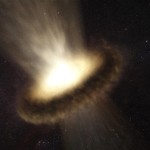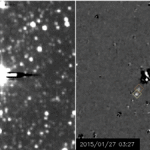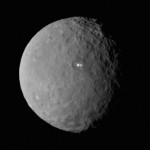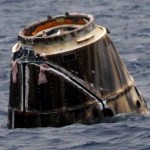Caves and Sinkholes Found on Saturn’s Moon Titan
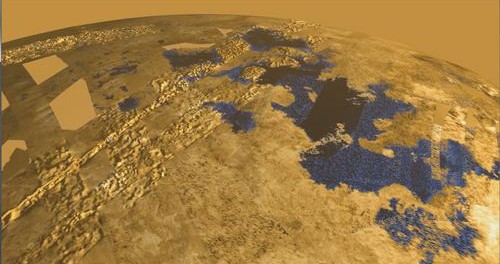
ESA and NASA has found that in a similar process to how Earth’s lakes, caves and sinkholes are formed, the same process is happening on Saturn’s moon Titan.
Saturn’s moon Titan is home to seas and lakes filled with liquid hydrocarbons, but what forms the depressions on the surface?(See Video Below)
A new study using data from the joint NASA and the European Space Agency (ESA) Cassini mission suggests the moon’s surface dissolves in a process that’s similar to the creation of sinkholes on Earth.
Apart from Earth, Titan is the only body in the solar system known to possess surface lakes and seas, which have been observed by the Cassini spacecraft. But at Titan’s frigid surface temperatures — roughly minus 292 degrees Fahrenheit (minus 180 degrees Celsius) — liquid methane and ethane, rather than water, dominate Titan’s hydrocarbon equivalent of Earth’s water.
Cassini has identified two forms of methane- and ethane-filled depressions that create distinctive features near Titan’s poles. There are vast seas several hundred miles (or kilometers) across and up to several hundred feet (or meters) deep, fed by branching, river-like channels. There also are numerous smaller, shallower lakes, with rounded edges and steep walls that are generally found in flat areas. Cassini also has observed many empty depressions.
The lakes are generally not associated with rivers, and are thought to fill up by rainfall and liquids feeding them from underground. Some of the lakes fill and dry out again during the 30-year seasonal cycle on Saturn and Titan. But exactly how the depressions hosting the lakes came about in the first place is poorly understood.
Recently a team of scientists turned to our home planet for the answer. They discovered that Titan’s lakes are reminiscent of what are known as karstic landforms on Earth. These are terrestrial landscapes that result from erosion of dissolvable rocks, such as limestone and gypsum, in groundwater and rainfall percolating through rocks. Over time, this leads to features like sinkholes and caves in humid climates, and salt-pans where the climate is more arid.
The rate of erosion creating such features depends on factors such as the chemistry of the rocks, the rainfall rate and the surface temperature. While all of these aspects clearly differ between Titan and Earth, the researchers think the underlying process may be surprisingly similar.

